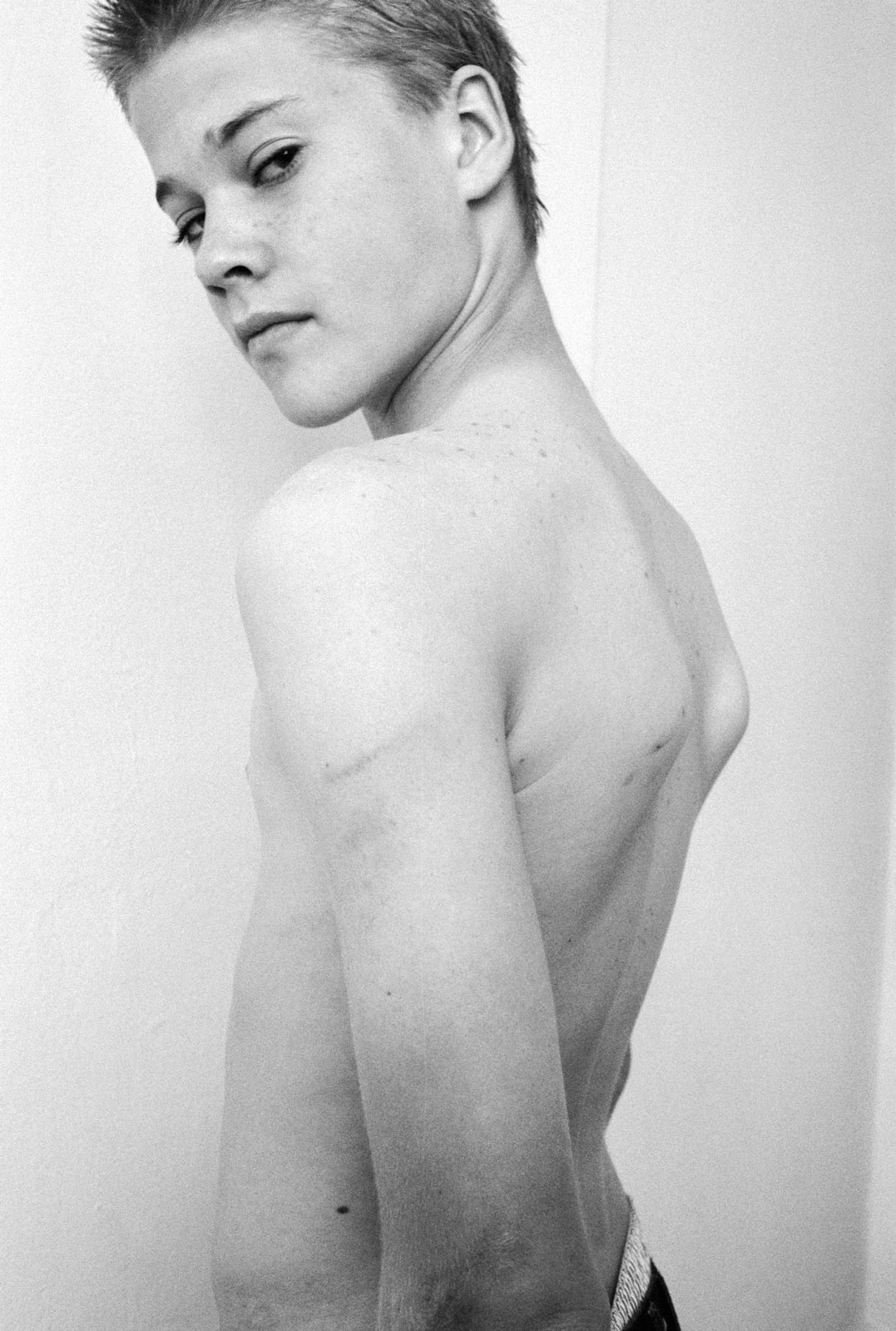Before brand deals and camera phones, there was a fully grassroots community, united by youth and a craving for self-conquest
Aperture’s Ed Templeton: Wires Crossed speaks eloquently about loss and joy and oblivion, the stature and swagger of youth, and its link to the 40-mile stare of middle age. It’s a book about skateboarding that isn’t about skateboarding—a book about this life we are all inside of.
Would a legend like Ed Templeton have become a graceful painter and photographer without the world of skateboarding? What about Mark Gonzales? Ryan McGinley? This practice is a breeding ground for the adolescent to create: no art school, no photography class is needed; no cues on how to write, how to edit, how to speak. It’s self-starter culture. DIY. Youth transitions to adulthood. The growing of pubes and skills and ideas and a sense of self, beyond those ollies and kickflips.
The world’s becoming a place hyper-fixated on a cultural rearview mirror—simultaneously compulsive and flippant (however that works), so that when it’s confronted with the annals of subsociety, it struggles to distinguish the picturesque from the sublime. It doesn’t really matter if we are participants now, or if we ever were.
Skateboarders look back at photographs of skateboarders; punkers look back at photographs of punks; cocker spaniel breeders read accounts of a long-since times deceas’d cocker spaniel convention… The identity politics of this age have become so fluent and fragmented that they remind me of Peter York’s vision in his 1980 book Style Wars: a future where subcultures become microcosmos of micro-tribes, to the extent that they implode and vanish before they can attach themselves to anything that will bring about any kind of change.
A decade or so ago, I authored the book Punk: An Aesthetic with my pal Jon Savage. We spoke at length with the science-fiction author William Gibson: He thought that punk might have been the last macro-tribe—and yeah, that’s probably right. But skateboarders are worth thinking about in these terms, too. Before they went the way of ultra-commodified athleticism and super-branded, mainstream hip-hop (where famous faces slapped rotating logos on themselves like Nascar, switching sponsorship brands and corporate alignment more often than you and I switch sandwich toppings), our man Ed Templeton captured the embers of the subculture: a fully grassroots community.
Skateboarding reminds an old-timer like myself how a network is built—how adventures are had, how opinions are formed, and how destinies take themselves out of cookie-cutter narratives that trap people in the aspic of suburbia lifelong. In the case of my life, it was punk rock, non-mainstream touring systems built into Europe and the US in the 1980s; the similarities between these two ecosystems are manifold.
In Wires Crossed, we see firsthand—through Templeton’s eyes—what the business of skateboarding looked like mere moments before C-SPAN and the Olympics and YouTube stardom; before thousands of non-skateboarders lined up outside Supreme stores, looking to accentuate their unhip, suburban lives with perceived corporate hip.
Yes, there was stardom—and, of course, the idea of the skate road trip is mired in romanticism, especially when decades have zoomed by and you’ve forgotten about the bedbugs and the hangovers and the STDs. For a person outside of skateboard culture, there is barely any context for the level of fame the people featured in the book experienced. You can certainly deduct that Eric Emerson and Brian Anderson were—and are—a big deal, but their lack of brand affiliation takes away that element of voyeurism. I hardly recognize most of the book’s faces, so I can’t filter the experience of the photograph through individual skateboarders’ notoriety.
This makes for a better book, I think. It’s about photography as document. Templeton pointed this out to me in a text chain:
Ed Templeton: I really wanted to make a photography book for photography fans. I knew the skate world would embrace it. But I needed to not alienate the art world by being too ‘insider.’
Johan Kugelberg: I don’t think there ever was a risk of that. I am curious how much Lesley Martin influenced editorial choices.
Ed: Zero! We discussed cuts. At one point she said I needed to lose 16 pages, but she didn’t suggest which ones. Chris McCall is the only other person to see it before publication, and he suggested a certain spread. The sex one.
Johan: What was the first-pass page count?
Ed: I don’t remember what the first page count was, but it wasn’t much bigger than it is now. It might have had 20 pages more. I really try to step out of my own mind and approach the edit as if I was someone who hated Ed Templeton.
Johan: We talked about this right after your accident years ago: the Beavis and Butt-Head of editing. ‘This is cool and this sucks.’ And the whole Cartier-Bresson thing which camera phones fucked forever: where you reach the decisive (unguarded) moment, and you will not see the image that it results in until days or weeks or months later. Your instinct isn’t cheapened by the immediate, personal Beavis and Butt-Head edit. Like the person who takes 40 selfies to choose from for their dating profile.
“Skateboarding reminds an old-timer like myself how a network is built—how adventures are had, how opinions are formed, and how destinies take themselves out of cookie-cutter narratives.”
Like Brian Anderson points out in a transcribed interview, social media has forever altered the skateboarding identity; real-time digital documentation of the act translates to dull and hollow exhibitionism. Prior to camera phones and Instagram and TikTok, that odd and exhilarating craving for self-conquest and self-betterment was all there was, even if all you were trying to do was show off to your creepy little skateboard friends. The end goal might be more about impressing your homies (a priori) and an online audience (pro secundo) than the implementation of the protective us-versus-them armor of adolescent rebellion—but hey. Adolescent rebellion is important: an alchemical process intuited by the otherwise powerless.
Templeton’s middle-aged perspective on youth art, youth song, and the machismo of manboys—and all its intertwined identity politicking—is very powerful. Sometimes, it’s rather sweet. The adult heartbreak I felt in witnessing Templeton’s peers had me hoping they came out the other side, healthy and happy. And middle-aged.
Two of Crossed Wires’s texts are particularly amazing: There’s the dialogue between Templeton and Anderson, a two-time world champion who came out to a culture that always had problems with homophobia. It brings profound insight to one of Templeton’s key photographs to date. It’s a masterpiece—a psychological portrait of Anderson—one of the gravitational centerpieces of the book.
And then Elissa Steamer—accidentally-on-purpose the subject of yet another masterpiece—brings into focus a female perspective. She was the first professional woman skateboarder, traveling America with Templeton’s chaotic crew. It’s an artistic statement on how to think and feel about the nihilism of skateboarding, and its collision with cross-demographic camaraderie. Also in the mix is the mystery of celebrity—and Templeton indicates, with great photographic insight, the icky side of its worship.
This, too, intermingles with the bravado of injury—how it became part of the pecking order of skateboarding. Not to get too geezerly sociological, but here goes: Internal pain could be reflected with the external. And on top of that, whether we like it or not, there’s the American idolization of youth and the young. Layers of context and subtext are everywhere in this book—patriarchy, the swill of suburbia, echoes of the dead and the survivors of World War II.
You can sense echoes of the roots of skateboarding in the rather adolescent fantasies of baby boomer post-war wealth: a dream and a yearning for individual freedom, which crumbled in the post-Reagan era; the new prevalence of skateable infrastructure, leading many to drift the American landscape as psychogeography seekers; and the photographs of the skateboarders themselves. Experience overtakes innocence, caught by Templeton’s camera at a time in their lives (and in ours) when the photograph was not yet the push-me-pull-me existential hiccup of an internalized emotional landscape.
It is possible that when Templeton was on one of his myriad trans-American skateboard tours—writing in his journal and snapping away—that the instinct to self-document had something to do with the picturesque, and that that is the reason why his work is sublime. We are bombarded with images these days.
Non-stop. Jeez. These images are cheapened, and so very cheap, especially on social media. The photographs that are supposed to make us react instead of yawn reach for different aspects of the romanticist notion of the sublime: awe-inspiring nature shots (with some babe or jabroni often posing up front), shocking images of the extraordinary—sexual, violent, or comical—and all we do is yawn. And death-scroll.
The way this masterful photobook slows us down and makes us think and feel is a grand contrast to modernity. Templeton moves us towards the sublime. He needs that, and so do we.









